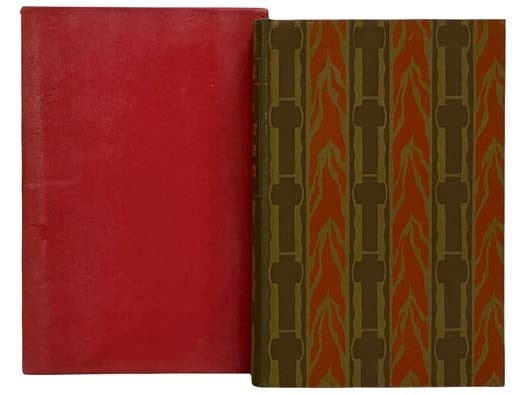
The Cloister and the Hearth: A Tale of the Middle Ages (The Heritage Press)
New York: The Heritage Press, 1932. Ward, Lynd (photogravures). Hard Cover. Very Good / No Jacket. Item #2323011
Includes Sandglass Number III:17. A very good copy in a very good publisher slipcase. Slipcase panels lightly faded. Top edge of Sandglass lightly toned.
xv, 745 pp. Photogravure illustrations by Lynd Ward. The Cloister and the Hearth (1861) is a historical novel by the English author Charles Reade. Set in the 15th century, it relates the story revolving about the travels of a young scribe and illuminator, Gerard Eliassoen, through several European countries. The Cloister and the Hearth often describes the events, people and their practices in minute detail. Its main theme is the struggle between man's obligations to family and to Church. Married to Margaret Brandt, Gerard sets off to Rome from Holland in order to escape the persecution of a vicious burgomaster as well as to earn money for the support of his family. Margaret awaits his return in Holland and in the meantime gives birth to his son. As Gerard is the favourite with his parents, his two lazy and jealous brothers decide to divert him from Holland and receive a larger share of fortune after their parents' death. They compose and dispatch a letter to Gerard informing him falsely that Margaret has died. Gerard believes the news and, stricken by grief, gives himself to a dissolute life and even attempts a suicide. After being saved from death by chance, he takes vows and becomes a Dominican friar. Later Gerard preaches throughout Europe and, while in Holland, discovers that Margaret is alive. He is afraid of temptation and in order to shun Margaret becomes a hermit. Margaret discovers Gerard's hiding place and convinces him to come back to normal life in which he becomes a vicar of a small town. Gerard and Margaret no longer live as a man and wife, but nevertheless see each other several times a week. A few years pass, Gerard's son grows up and is sent to a private school. Later, having heard that plague breaks out at the school, Margaret rushes to rescue her son, but contracts the disease herself and dies shortly afterwards. Gerard takes her demise painfully, renounces his vicarship and dies in a few weeks. The author of The Cloister and the Hearth, at the end of the story, reveals that Margaret's and Gerard's son, also named Gerard, became the great Catholic scholar and Humanist, Erasmus of Rotterdam, a major historical figure. Indeed, little is actually known about Erasmus' actual parentage (apparently illegitimate), though his parents were in reality named Margaret and Roger Gerard. Reade was apparently using his imagination to fill in some historical gaps in Erasmus' background. The Cloister and the Hearth can easily be read as an attack on various requirements of Catholic priesthood that prevented Margaret's and Gerard's love from continuing to be consummated; and this attack is very consistent with some of Erasmus' thought.
Price: $15.00
